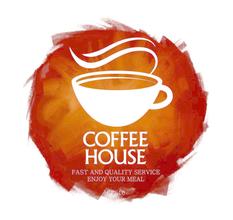Introduction to the flavor and taste of Ethiopian Sidamo Shachiso Coffee with a strong floral flavor.
In July 1991, EPF hosted a national conference attended by more than 20 political and ethnic organizations. The Conference adopted the Transitional Charter and elected an 87-member House of Representatives, with the President of ERF, Meles Zenawi, as President of the Transitional Government and President of the House of Representatives. A transitional government was established. On 24 May 1993, Eritrea (formerly Ethiopian province of Eritrea) became a sovereign State through an internationally supervised referendum. In December 1994, the Constitution of the Federal Democratic Republic of Ethiopia was formulated. The constitution stipulates that Ethiopia will adopt a federal system and a parliamentary cabinet system after the election, with a term of office of five years. National elections were held in May 1995. On August 22, the Federal Democratic Republic of Ethiopia was established. Meles became Prime Minister as Chairman of the Majority Party in the House of People's Representatives. On May 14, 2000, Ethiopia held a national election, in which the Ethiopian Revolutionary Front defeated other opposition parties by an absolute majority to retain power. In October, a new federal parliament and government were established. The presidents of both houses and Prime Minister Meles were elected for re-election. The original cabinet was also retained with the approval of the parliament. In October 2001, Mei adjusted the government structure and reshuffled the cabinet, adding the Ministry of Youth, Sports and Culture and the Ministry of Taxation, and established a new cabinet composed of 18 ministers. Ethiopia is rectangular in shape, with a ratio of length to width of 3:2. From top to bottom by green, yellow, red three parallel equal horizontal rectangle composition, flag surface middle has the national emblem pattern. Since the late 19th century, Ethiopia has adopted a green, yellow and red striped flag. Ethiopia was the first African country in modern history to join the ranks of free peoples. [8]
By the 1950s and 1960s, many African countries had become independent one after another, and they adopted green, yellow and red as their national flags, so they were called "pan-African colors". Ethiopia is one of the ancient African countries, with a long history of more than 3000 years, giving green, yellow and red three colors a deeper origin in this land. Historically, they have been associated with the liturgy of the Coptic Church, enshrined as symbols of the Trinity of the Father, the Son and the Holy Spirit, embodying the three virtues of loyalty, hope and mercy advocated by human freedom. These three colors also represent three regions of Ethiopia: Tikrit (red), Amhara (yellow), and Theoya (green). Green represents fertile land, mild climate and abundant plant resources, and also symbolizes hope for the future; yellow symbolizes peace and fraternity, and also represents the people's determination to build the country; red symbolizes that the people are ready to shed blood to defend the motherland.
Ethiopia's beans are easy to identify, most of the beans are small and thin pointed long beans, so-called 'longberry', and often mixed with small oval short beans, so-called' shortberry', which look different in size and shape. Most commercial Grade4 or Grade5 beans are a mixture of hundreds of different seeds from each region, so the phase imbalance is most obvious and it is not easy to bake evenly.
Even the official Ethiopian research unit cannot say how many Arabicans there are in Ethiopia. Coffee cooperatives on one mountain certainly grow different varieties than those on another, and even small farmers in the same area grow different varieties of coffee. Some estimate that there are at least 2,000 varieties of Ethiopian coffee, and there are even more than 4,500 varieties. Ethiopian beans appear to be a bit malnourished compared to the fat bodies of Bourbon 'SL28', the dominant variety in Kenya to the south, or the Central and South American and Asian tibeka. But "beans" can not be judged by appearance, Ethiopian coffee citrus aroma can be called the world's best, whether instant coffee or freshly ground coffee, extraction on the smell of orange or lemon fragrance. On the palate, it has a rich floral, fruity and sour aroma that is characteristic of Ethiopia, but the body or consistency is slightly poor. The biggest drawback is that it is easy to roast unevenly, especially sun-dried beans. Ethiopian coffee beans are divided into five grades. The first and second stages are water-washed beans. Grade1 means 0~3 defective beans per 300 g of raw beans;Grade2 means 4~12 defective beans per 300 g. Grade 1 washed beans are extremely rare and generally difficult to buy. At present, all washed beans exported from Ethiopia are Grade2. The quality of sun-cured beans is ranked as Grade3, Grade4 or Grade5. Although Grade4 has significantly fewer defective beans than Grade5, coffee farmers claim that in order to save taxes on exports, they often lower the Grade4 to Grade5 to save money. This may just be a marketing ploy, but in fact Grade5 is not as good as Grade 4.

Important Notice :
前街咖啡 FrontStreet Coffee has moved to new addredd:
FrontStreet Coffee Address: 315,Donghua East Road,GuangZhou
Tel:020 38364473
- Prev

Introduction of characteristic flavor and taste varieties of Dominica coffee manor with intertwined aftertaste
Coffee in Dominica varies slightly in taste according to the altitude of the region where it is grown, with sour but rich taste in the highlands, and less sour and smoother taste in the lowlands. On the other hand, the high-quality coffee beans produced by some Dominican estates have a rich aroma, mellow taste, moderately bright sour taste, and are often used with famous Puerto Rican or Jamaican coffee.
- Next

Introduction to the Flavor of High-quality Coffee beans in the producing area of Larez Yaoke Coffee Manor in Puerto Rico
In 1898, the Spanish-American War broke out and Spain was defeated. According to the Treaty of Paris, Puerto Rico was ceded to the United States. The administrative jurisdiction of the United States over Puerto Rico first took the form of a military junta. During its two years of governance of the island, the junta established schools, roads, railways, hospitals and health facilities. In 1900, the United States Congress established civilian control over the island. The Governor, the Cabinet and
Related
- Detailed explanation of Jadeite planting Land in Panamanian Jadeite Manor introduction to the grading system of Jadeite competitive bidding, Red bid, Green bid and Rose Summer
- Story of Coffee planting in Brenka region of Costa Rica Stonehenge Manor anaerobic heavy honey treatment of flavor mouth
- What's on the barrel of Blue Mountain Coffee beans?
- Can American coffee also pull flowers? How to use hot American style to pull out a good-looking pattern?
- Can you make a cold extract with coffee beans? What is the right proportion for cold-extracted coffee formula?
- Indonesian PWN Gold Mandrine Coffee Origin Features Flavor How to Chong? Mandolin coffee is American.
- A brief introduction to the flavor characteristics of Brazilian yellow bourbon coffee beans
- What is the effect of different water quality on the flavor of cold-extracted coffee? What kind of water is best for brewing coffee?
- Why do you think of Rose Summer whenever you mention Panamanian coffee?
- Introduction to the characteristics of authentic blue mountain coffee bean producing areas? What is the CIB Coffee Authority in Jamaica?

